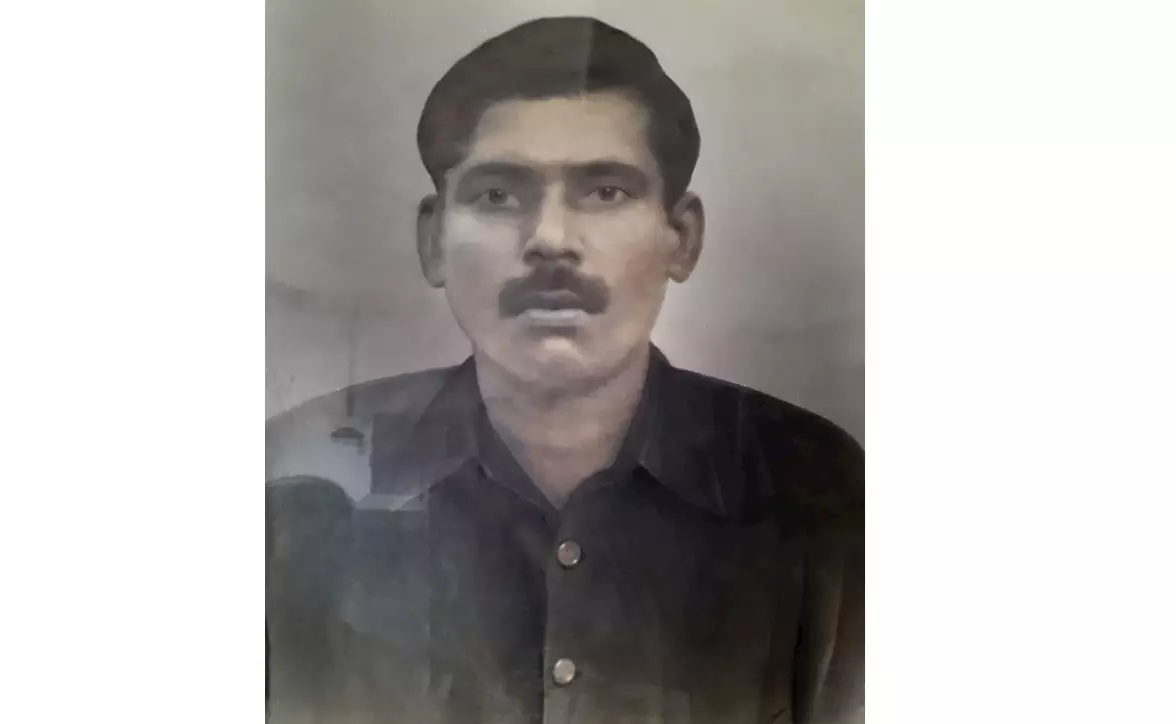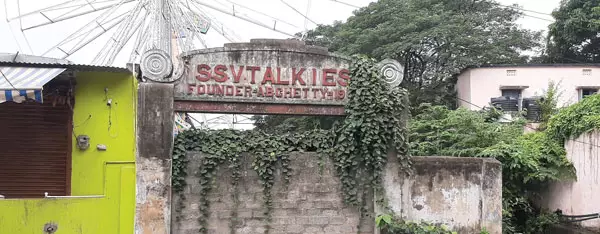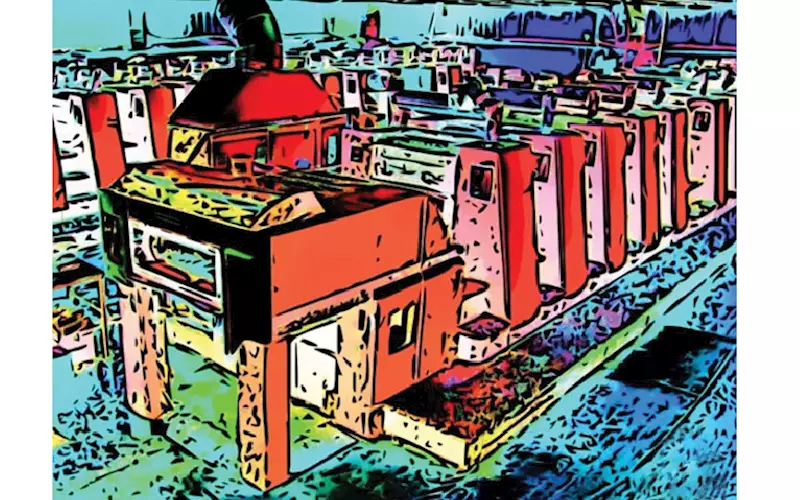51 questions with Laveti Ramakrishna of Kakinada Press
The value of commercial print has plunged. In this time of strife, Ramu Ramanathan tries to comprehend the dilemma of a self-made printer in South Odisha
18 Aug 2021 | By Ramu Ramanathan
Ramu Ramanathan (RR): When was Kakinada Press started?
Laveti Ramakrishna (LR): In 1937. Kakinada Press was started in the name of Kakinada Binding Works by my father, the late LA Swamy. It was situated at Hanuman Bazaar in Brahmapur.
RR: How many employees and shifts? Plus how many days in a week?
LR: There were about 20 employees in those days, working one shift daily for six days a week.
RR: Any history of the first job?
LR: No, but we were suppliers to Brahmapur Co-op Central Bank and Brahmapur Co-op Urban Bank. Basically, we were job printers catering to the business community of Brahmapur.
RR: Why did your father the Late Laveti Appalaswamy start the press?
LR: My father had a friend (Late Atmakuri Subba Rao) who was one of the proprietors of the first cinema hall in Odisha, SSV Talkies (established in 1927). They had a press in the cinema hall premises for the printing of tickets. They couldn’t manage to print these tickets. My father was asked to manage the press for four to five years. Then he branched out and started a press in Hanuman Bazaar.
RR: What were his qualifications?
LR: My father was a matriculate.
RR: Who was your grandfather?
LR: My grandfather was Laveti Jagannatha Rao. My grandfather migrated from Rajam (Andhra Pradesh) to Brahmapur for livelihood.

Late Laveti Appalaswamy
RR: You started with two letterpress machines, one Chandler & Price and one Dodson. How did you source the typesetting, paper and other consumables?
LR: We sourced the typesetting from Norton Type Foundry, Chennai. The paper and consumables were sourced from Cuttack.
RR: You say your father was successful. In what way?
LR: He was very attentive from the beginning about the quality of product. He made sure quality standards were maintained.
RR: How did he deal with his employees?
LR: He was very generous towards his staff due to which a lot of people have worked in our press their whole life. Even today, their children started working after they have passed on ...
RR: How many second generation members at Kakinada Press?
LR: We have four members who are the second generation of the people who have been working with us.
RR: One print mantra you learnt from your father?
LR: None that I remember. My father died when I was very young.
RR: When did your father pass away?
LR: In 1970. My elder brother L Jagganadha Rao managed the press.
RR: How difficult was it for your brother? How did he cope?
LR: He was not serious in maintaining the press.
RR: How old were you?
LR: I was 14 years old when my father passed away. Due to family issues, my brother stopped my education and I worked in the press.
RR: What type of work did you do at the press?
LR: I was a compositor from 1970 to 1978.
RR: Did you complete your education later?
LR: No.
RR: Your first moment of realisation that this is what you will do!
LR: I realised this early on because my brother stopped my education. Print was what I was supposed to do.
RR: In 1978 your brother switched over to another business (fishing) …
LR: So, at the age of 18, I was managing the press.
RR: How was your first day in-charge?
LR: The first day was very tough. I was working from morning to evening. Plus there was this additional pressure, since I took over the busienss reins from my elder brother.
RR: The press was supplying ledgers and other stationery to all the Co-operative Banks of Odisha. How did the system work?
LR: We were suppliers ledgers and cheque books to all the co-operative banks including the Apex Bank OSCB. These banks placed their orders, directly.
RR: What type of contracts were these?
LR: In those days, the contracts were awarded annually. The relied on the firms goodwill back then. If you were consistent in your deliveries of ledgers and the print quality was good, you were good enough for them. Now these contracts are awarded through a tender process and L1 is awarded the contract.

SSV Talkies in Brahmapur had a press in the cinema hall for the printing of tickets
RR: Who were your competitors in those days?
LR: For ledgers (leather binding) there were no competitors in Odisha for us ...
RR: What type of daily work ritual do follow?
LR: From 9 am to 7 pm, I make sure that I am always on time and be present the whole time.
RR: One of Kakinada Press’ longest serving customers?
LR: The Berhampore Co-operative Central Bank. We are their print suppliers even today.
RR: You mentioned family issues in the 1970s. Were these issues resolved?
LR: Yes, they were resolved. Kakinada Press played a big role in resolving those issues.
RR: When did Kakinada Binding Works become Kakinada Press?
LR: 1986.
RR: When did you switch to offset?
LR: In 1998.
RR: How did you prepare yourself for the switch? For example, PS plate trials etc?
LR: Initially, we used to source positive films from Crystal Dot in Vijayawada.
RR: Which offset press did you opt for?
LR: We purchased our first Hashimoto 12x18 offset machine. In 1999 we purchased a Hashimoto Feathertouch 19x27 press.
RR: Unusual choice. Why Hashimoto?
LR: I purchased the machine from Gunashekaran of Safire Printing & Packaging Company in Chennai. He suggested the Hashimoto brand. Safire provided the spare parts and serviced our machines.
RR: What type of jobs was Kakinada Press producing in the nineties? ...
LR: We were supplying to the banks. The items were cheque books, FD receipts, ledgers and other stationery. Typical print runs were 20,000 or thereabouts.
RR: You do commercial short run jobs as well. Define short run?
LR: For me, short run is 200.
RR: In 2001 you made another investment …
LR: Yes, we purchased a Colour Metal Perle 19x28 offset press.
Trivia about Brahmapur
- Brahmapur was the first municipality of Odisha, established in 1867.
- Every time Brahmapur is mentioned connoisseurs talk about the Silk City. This was once a dominant industry and it was famous for its silk.
- The Telugu Lengayat Dera (weaver) community is a dominant force. There were about 600 weavers in Brahmapur in those days. But now there are about 50 families still into weaving.
- VV Giri, the former President, was born in Brahmapur. The city boasts of a Scrap Museum.
RR: What is your approach to financing a press?
LR: We always weighed the requirement rationally.
RR: Spend or save? Your mantra?
LR: Save … Covid has reiterated this.
RR: By now what were the changes at Kakinada Press in terms of the shift system and factory size?
LR: There were no changes. The faster turnaround times helped increase the volumes.
RR: When did your son join the business?
LR: My son Arun Kumar joined the business in 2012. He has a MBA from London. He manages the press alongwith me now.
RR: You purchased a Mitsubishi five-colour?
LR: We were contemplating commercial multicolour printing for a long time. We were the first ones in South Odisha to do so.
RR: What do you do for plate processing and how do you manage your pre-press workflow?
LR: We continue to partner with the same firm Crystal Dot who have been supplying our plates.
RR: What about your post-press ops?
LR: We have our own binding unit since we supply to banks and government institutions. We try do everything on our own, in-house.
RR: How has the Covid impacted your print business?
LR: Our business has been completely wiped out from March 2020 onwards ...
RR: Any support from the government?
LR: There has been no help from the government for the printing sector nor any specific credit schemes for the printing industry.

Kakinada Press’ first automatic Heidelberg platen machine
RR: So how have you sustained ops in the past 15 months?
LR: We have never really took loans from banks for buying machines or capital requirements. We always invested our own money. Covid made us realise that credit facilities offered through banks are a good thing since we will have liquidity for capital expenses.
RR: What have you been telling your team at Kakinada Press?
LR: That we need to work harder to overcome this difficult situation. We work as hard as our staff.
RR: Challenges and opportunities for commercial printers in Odisha in the post-Covid world?
LR: The price of paper and other consumables have increased exponentially. Unless there is reduction of prices, the margins are going to suffer.
RR: What kind of change would you like to see in the world of print in Odisha?
LR: I wish we had an association for printers in Brahmapur, especially.
RR: How did you cope with the increase in cost of paper and other raw material / inputs?
LR: We have passed on the increase to customers due to which the overall cost has increased. Some of the printing charges have been reduced due to this.
RR: Brahmapur is the cleanest city in the State. Three things you do to maintain your press and keep the shopfloor clean?
LR: Throw everything in the dust bin at regular time intervals. Paper waste is cleared regularly. And finally, clean the shopfloor everyday in the morning before starting operations.
RR: Where do you see Kakinada Press in the next 80 years?
LR: I suppose we will go digital by then. This is provided we weather the situation in a post-Covid world. End July 2021, I sold my five-colour press since I could not bear the interest burden. Today morning, I was busy handing over the spares plus handling the paperwork.
RR: You have handled so many types of adversities in your print career. One piece of advice: since many print firms are finding it difficult to cope in these tough times ...
LR: There is always hope.
RR: Thank you Laveti Ramakrishna.
At a glance

Laveti Ramakrishna
How do you unwind?
Reading books.
One activity you love?
Gardening.
Favourite film experience at SSVT?
Lava Kusa (Telugu movie starring NTR).
Once the pandemic is over, where will you vacation?
Will visit my daughter in Singapore.
One print job you love?
I love everything related to printing.











 See All
See All